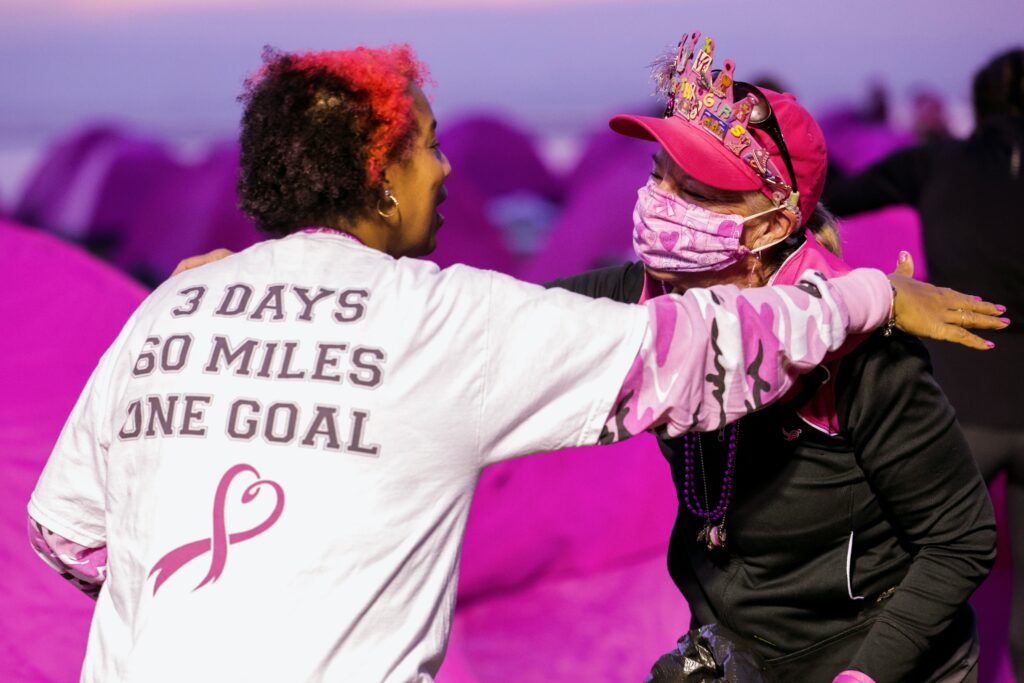Empathetic Marketing: How to Communicate In Times of Crisis
When crises strike, brands in the outdoor and travel industries face unique challenges. Whether dealing with natural disasters, war/conflict, economic, or health crises, using more empathetic marketing can help you maintain communication with your followers and customers, and show your support and compassion.
At Top Rope Media, we’ve supported outdoor recreation and travel/tourism brands through significant, life-altering events such as avalanches, hurricanes, wildfires, economic downturns, and the COVID-19 pandemic. In this blog, we share some key ways to adapt messaging, and how focusing on being more empathetic can help you navigate the challenging times ahead. Posting, “We’re All in this Together,” or using the trending hashtag might be your first instinct. However, brands that actively listen and engage meaningfully with their customers will be better equipped in crisis situations.
We’ll cover the following topics:
- Why Practice Empathetic Marketing
- Understanding Customers Needs
- Being Transparent with Your Business Operations
- Adapting Your Messaging to be More Empathetic
- Avoid Opportunistic Marketing
- Plan for Recovery, Rebuilding and Reopening

How do you switch focus from promoting sales of your product and services to showing empathy for the crisis in your community?
1. Why Practice Empathetic Marketing
Empathy isn’t just about feelings, it’s a skill that needs to be honed through practice and reflection. While the capacity for empathy is innate, its application in professional settings requires intentionality. By cultivating empathy in your messaging, you can foster deeper connections, enhance customer trust, and create communications that resonate in a meaningful and lasting way.
In this blog, we’ll give you real-world examples of what works well, what could have been better, and the lessons learned we’ve learned from marketing in crisis situations.
2. Understanding Customer Needs
Crises often hit outdoor and tourism-related industries hard, disrupting travel plans, sporting events, and recreational activities. To navigate these challenges, start with assessing how the crisis affects your audience. Actively ‘listen’ to your audience, and read what they are saying, or not saying.
- Are people canceling trips?
- Prioritizing staying indoors?
- Are they displaced and need somewhere to stay with their kids and pets?
- Are they raising funds and providing donations to those directly impacted?
While most people are naturally capable of feeling compassion, understanding someone else’s needs, emotions, or challenges often demands conscious effort. This is especially true in diverse markets where customers’ backgrounds, preferences, and pain points may differ significantly from our own. Tailor your messaging to address their concerns and add value. Provide solutions relevant to their current situation.
Example: During the COVID-19 pandemic, many of us turned to outdoor activities like hiking, cycling, and camping due to restrictions on indoor gatherings and international travel. We needed to give our clients’ customers ideas on things they could do close to home, and if they couldn’t easily get outdoors, we’d have to bring the adventure to them. This led to many Instagram Lives, and YouTube tutorials, videos of people ‘skiing’ and ‘climbing’ in their homes. These pieces provided a human connection and valuable resources and gave hope that we would all be back outside together soon.
Shift your focus and provide solutions to meet your customers’ evolving needs. Understanding the impact of the crisis on your audience allows you to create more empathetic marketing that aligns with current consumer priorities.

Social distancing and wearing a mask was the norm for so long. To get back outside at sporting events and connect with others felt so special.
3. Be Transparent About Your Operations in a Crisis
Understand how the crisis is impacting your business and your industry.
- Will supply chains be disrupted?
- Do you need to close the shop, limit hours, or cancel events?
- Will you be short on staff?
- How long until you can reopen?
Be open and honest about any disruptions or changes to your operations. Communicate clearly with customers to build trust and show empathy.
Example: During Hurricane Katrina and Superstorm Sandy, many coastal businesses remained without power, or were shuttered for months on end. Daily operations screeched to a halt. Protecting physical properties from further damage remained a priority, as well as caring for employees and loved ones. Keeping customers informed daily and giving them up-to-date information on shipments, reopening, and how they can help with the recovery efforts was key.
Instead of ‘going dark’, stay active with your communications, yet be transparent with your priorities and obstacles you and your team are facing.
4. Adapting Your Messaging to be More Empathetic
In the constant rush to reach sales goals and meet deadlines, it’s easy for messaging to become transactional. Practicing empathy helps you nurture relationships, which fosters loyalty and an emotional connection. Businesses operate in a results-driven environment. Incorporating empathetic marketing into your messaging requires re-prioritizing the human connection as a cornerstone of your strategy.
Example: During the wildfire that struck Lahaina in Maui, we had two clients who were operating in Hawaii at the time. Understanding the situation on the ground, from a local’s perspective, was key. There were conflicting messages of ‘tourists get out’, ‘don’t come to visit’, but then soon switched to ‘tourists, please come back’. The loss of an entire town was heartbreaking, yet many Maui residents rely heavily on tourism dollars to sustain their businesses. Therefore, it was a delicate balance of adapting messaging to showcase the ‘boots on the ground’ effort, sharing stories of resilience, standing in solidarity, and then slowly rolling out a re-opening strategy to invite visitors back when the time was right.
Empathy is a fundamental human trait, but its application—especially when you need to market your products and services—is not always automatic. If you operate in an area where you serve tourists and outsiders as opposed to locals, adapt your messaging to be more empathetic to the crisis the local community is facing.
Here are other ways you can transition to more empathetic marketing:
- Avoid using insensitive language, imagery, or emojis that could come across as tone deaf
- Press pause on scheduled social posts
- Avoid dropping email marketing campaigns
- Pause ads, especially those that might be serving to that community
- Offers solutions to travelers- free rebooking, refunds, discounts, etc.
Think about how your actions, even if it’s just an Instagram post or an email blast, might be perceived by others. Demonstrate care and compassion before profit to build lasting goodwill.

Adapt your marketing and messaging to be more compassionate and kind during times of crisis.
5. Avoid Opportunistic Marketing in a Crisis
To avoid opportunistic marketing during a crisis, prioritize authenticity and genuine support over profit-driven messaging. Refrain from exploiting fear, urgency, or vulnerability to push sales, as this can damage trust and cause adverse reactions. Instead, focus on providing meaningful value and solutions that align with the audience’s needs and circumstances. Ensure that campaigns are respectful, empathetic, and consistent with your brand’s values.
Example: A home improvement brand might consider launching a campaign during the Los Angeles wildfires promoting “Fireproof Your Home Now”. The campaign uses the imagery of burning homes in the Palisades and focuses heavily on pushing fire-resistant products without offering meaningful support or context for affected communities.
This is problematic as it exploits people’s fears during a vulnerable time and prioritizes profit over empathy. This can lead to public backlash, eroding trust and damaging the brand’s reputation. Instead of using fear-based tactics, the brand could focus on offering genuinely helpful resources:
- Free fire safety guides
- Discounts for affected areas
- Donate to local fire relief efforts
- Volunteer to be a donation drop-off site
Messaging should emphasize support and solidarity, such as “We’re here to help you stay safe,” while providing actionable steps without adding to the panic. By demonstrating empathy and focusing on the community’s needs, you can build trust and provide helpful resources.

While we are all capable of being empathetic, using it in our marketing and business operations takes practice.
6. Plan for Recovery, Rebuilding, and Reopening
During a crisis situation, monitor the news cycle. Stay updated on the evolving changes and have a communication plan in place. If needed, designate a spokesperson who can be the main contact for questions or media interviews. Crises demand adaptability, and you may need to have daily meetings to address concerns and customer sentiment. Stay agile and adjust your marketing campaigns quickly to reflect changes.
As the community begins to recover and rebuild, share positive stories of resilience, employee actions, or user-generated content. Avoid purely sales-focused messaging if possible during this time. Wait for local authorities to announce the reopening of areas affected before resuming tours and activities.
After reopening has begun, you may notice a heightened consumer awareness of sustainability, safety, and responsible practices. Outdoor recreation and travel brands are uniquely positioned to lead in this space. Re-engage customers by including messaging that highlights eco-friendly, sustainable practices and conservation initiatives.
Final Thoughts on Empathetic Marketing and How to Communicate During a Crisis
Humans are influenced by personal experiences, biases, and assumptions which can limit their ability to fully understand someone else’s perspective. Practicing empathy and using empathetic marketing involves recognizing and setting aside these biases to engage with people authentically.
Here are some of the tips we shared that can help you accomplish this:
- Share valuable resources and provide genuine support
- Donate, volunteer, or highlight relief efforts
- Increase customer service and provide flexible policies
- Actively monitor the crisis, and customer sentiment, and address issues promptly
Empathetic marketing during a crisis requires outdoor and travel brands to show compassion and embrace adaptability. By understanding your audience’s evolving needs and staying true to your values you can maintain relevance, inspire, and connect with your customers during difficult times. For more on how to be more empathetic, here’s a good blog from the Calm app.
Thanks for reading,
Meredith C. McConvill, Top Rope Media
Recent Comments